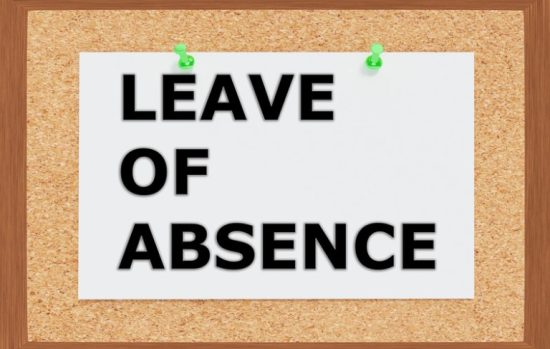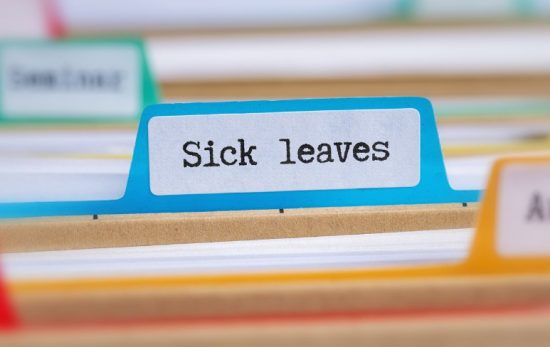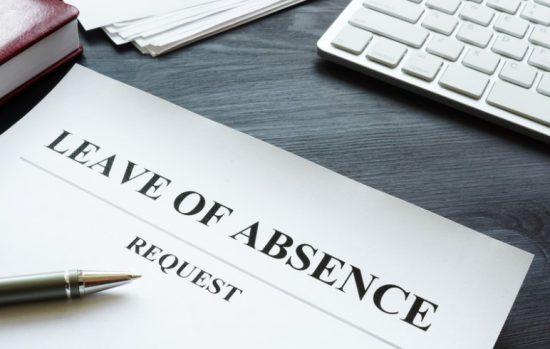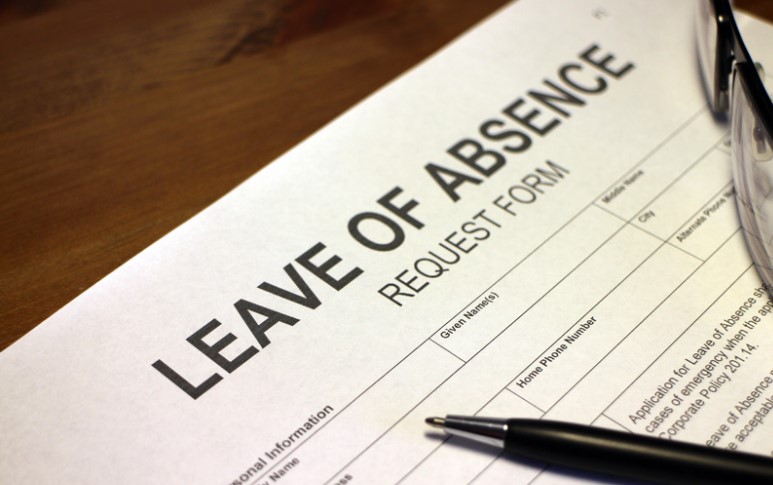Welcome to our blog post on “What is a Leave of Absence in Canada? – An Employers Guide.” In today’s fast-paced world, employers need to understand the concept of leave of absence and how it can impact their employees. Whether it’s for personal reasons or unforeseen circumstances, granting a leave of absence is an essential part of ensuring employee well-being and maintaining a positive work environment.
So, what exactly is a leave of absence? Well, think of it as more than just taking time off from work. It’s an extended period where an employee temporarily steps away from their responsibilities to handle significant life events. Whether this time off is paid or unpaid depends on various factors that we’ll delve into later.
In this blog post, we will explore different types of leaves available in Canada, the distinction between paid and unpaid leaves, mandatory versus voluntary leaves, how employees can apply for a leave, and much more! So, grab your coffee (or tea) because we’re about to embark on a journey through the intricacies of leaves of absence in Canada. Let’s dive right in!
What is a Leave of Absence?

A leave of absence is more than just a break from work. It’s an opportunity for employees to address significant personal events that require their time and attention. Whether it’s caring for a sick family member, dealing with a medical issue themselves, or handling other unexpected circumstances, a supervisor grants this extended period away from work.
During a leave of absence, the question of whether it is paid or unpaid arises. The answer depends on various factors such as company policies and the nature of the event itself. Some leaves may be covered by employer-provided benefits like vacation days or sick leave, while others may require unpaid time off.
In essence, when an employee takes a leave of absence in Canada, they are granted valuable time to handle personal matters without jeopardizing their job security. So whether it’s navigating through life-altering events or tending to unexpected emergencies, employers understand the importance of providing support during these challenging times.
Why Employees Request Leave of Absence?
Employees may request a leave of absence for various reasons, even after exhausting their paid time off options. This additional time away from work allows them to handle personal matters that require extended attention and focus.
One key reason employees request a leave of absence is to ensure job security while they are away. By taking leave, employees can maintain their position within the organization without fear of losing their job due to prolonged absences or inability to fulfill work responsibilities during challenging times.
Another important factor is the ability of employees to avail of other employment benefits, such as health insurance coverage continuation for themselves and their family members. During a leave of absence, these benefits must remain intact so that individuals can continue receiving necessary medical care and support.
Granting employees a leave of absence demonstrates an understanding and empathetic approach toward their circumstances. It not only helps retain valuable talent but also fosters loyalty and commitment among staff members who feel supported by their employer during difficult times.
Different Types of Leave of Absences

There are several different types of leaves of absence that employees may request, depending on their specific circumstances and needs. Let’s take a closer look at some common types:
- Sick leave: This is a leave of absence that is taken when an employee is sick or injured and unable to work. The amount of sick leave that an employee is entitled to vary depending on the province or territory in which they work. In Ontario, for example, employees are entitled to three days of paid sick leave per year.
- Bereavement leave: This is a leave of absence that is taken when an employee experiences the death of a close family member. The amount of bereavement leave that an employee is entitled to vary depending on the province or territory in which they work. In Ontario, for example, employees are entitled to two days of paid bereavement leave.
- Family medical leave: This is a leave of absence that is taken to care for a sick family member. The amount of family medical leave that an employee is entitled to vary depending on the province or territory in which they work. In Ontario, for example, employees are entitled to up to 12 weeks of unpaid family medical leave.
- Personal leave: This is a leave of absence that is taken for personal reasons, such as to deal with a family emergency or to travel. The amount of personal leave that an employee is entitled to varies depending on the employer. Some employers may offer paid personal leave, while others may not.
- Maternity leave: This is a leave of absence that is taken by female employees to give birth and care for a newborn child. The amount of maternity leave that an employee is entitled to vary depending on the province or territory in which they work. In Ontario, for example, employees are entitled to up to 18 weeks of paid maternity leave.
- Paternity leave: This is a leave of absence that is taken by male employees to care for a newborn child. The amount of paternity leave that an employee is entitled to vary depending on the province or territory in which they work. In Ontario, for example, employees are entitled to up to five weeks of paid paternity leave.
- Adoption leave: This is a leave of absence that is taken by employees to adopt a child. The amount of adoption leave that an employee is entitled to vary depending on the province or territory in which they work. In Ontario, for example, employees are entitled to up to 18 weeks of paid adoption leave.
- Jury duty leave: This is a leave of absence that is taken by employees who are called to serve on jury duty. Employees are entitled to unpaid jury duty leave, and their jobs must be held for them until they return.
- Military leave: This is a leave of absence that is taken by employees who are called to active duty in the military. Employees are entitled to unpaid military leave, and their jobs must be held for them until they return.
Each type of leave serves a unique purpose and provides employees with the opportunity to address important personal matters without fear that it will negatively impact their employment status.
Is a Leave of Absence Paid or Unpaid?

One of the key considerations when it comes to a leave of absence is whether it will be paid or unpaid. This can vary depending on several factors, including company policies, employment contracts, and applicable laws.
In many cases, leaves of absence are unpaid. This means that employees who take time off for personal reasons such as medical issues or family emergencies may not receive their regular salary during this period. However, some employers do offer paid leave options for certain situations.
Paid leaves of absence are often granted for specific circumstances like maternity or paternity leave, where employees need time off to care for a new child. Additionally, there may be provisions in place for paid sick leave or short-term disability coverage.
It’s important to note that the duration and eligibility criteria for paid leaves of absence can differ from one organization to another. Some employers may have more generous policies than others when it comes to providing financial support during an employee’s time away from work.
Whether a leave of absence is paid or unpaid will depend on various factors including company policies and legal requirements. Employees should consult with their HR department or refer to their employment contract to understand the specific terms and conditions regarding compensation during a leave of absence
Mandatory Leave vs. Voluntary Leave
When it comes to leaves of absence, there are two distinct types that employers should be aware of: mandatory leave and voluntary leave. Federal, regional, and state laws, including the Family and Medical Leave Act (FMLA) and the Americans with Disabilities Act (ADA), regulate mandatory leave. Employers must familiarize themselves with these laws to ensure compliance within their organization.
On the other hand, voluntary leave is at the discretion of the employer. It is often treated as an employee perk, offering additional time off beyond what is legally required. As an employer, you can advertise this benefit during recruitment or when engaging with employees to highlight your commitment to work-life balance.
Since voluntary leave is not regulated by any specific laws, companies need to have clear policies in place regarding leaves of absence. These policies should be included in the employee handbook to eliminate any ambiguity surrounding eligibility criteria and governing rules.
By being precise about who qualifies for a voluntary leave of absence and establishing transparent guidelines around eligibility, employers can avoid potential misunderstandings or conflicts down the line.
Remember: Understanding both mandatory and voluntary leaves of absence will help you create comprehensive policies that cater to your employees’ needs while ensuring compliance with applicable regulations.
How Do I Apply for a Leave of Absence?

The process of applying for a leave of absence will vary depending on the employer and the type of leave you are requesting. However, there are some general steps that you can follow:
- Talk to your employer: The first step is to talk to your employer about your need for a leave of absence. Let them know why you need to take leave and how long you think you will need.
- Check your employee handbook: Your employee handbook may have specific procedures for requesting a leave of absence. Be sure to check your handbook before you talk to your employer.
- Submit a written request: Once you have spoken to your employer, you should submit a written request for a leave of absence. The request should include the following information:
-
-
The kind of leave you’re requesting
-
The dates when the leave will begin and conclude
-
The reason for the leave
-
Any supporting documentation, such as a doctor’s note
-
- Meet with your employer to discuss your request: Once you have submitted your written request, you should meet with your employer to discuss it further. This is an opportunity to answer any questions your employer may have and to negotiate the terms of your leave.
- Sign a leave of absence agreement: Once you and your employer have agreed on the terms of your leave, you should sign a leave of absence agreement. This document will outline the terms of your leave, such as the start and end dates, the amount of pay you will receive, and your job security.
It is important to note that your employer is not obligated to grant your request for a leave of absence. However, most employers will be understanding and will work with you to find a solution that works for both of you.
Conclusion
A leave of absence is an important provision that allows employees to take extended time off from work for significant personal events. It can be either paid or unpaid, depending on the circumstances and employer’s policies. Employees may request a leave of absence when they have exhausted their paid time off options or require additional time away from work.
Offering leaves of absence demonstrates an understanding and supportiveness towards employees’ situations while maintaining job security and necessary benefits. By implementing clear policies and guidelines surrounding this provision, employers can navigate through various circumstances with ease.
Remember that each situation will differ based on individual needs and company policies; it is crucial to consult legal counsel if you have any questions about how leave regulations apply in your jurisdiction.
So now you understand what a leave of absence entails in Canada – make sure to handle it with care!
FAQs -What is a Leave of Absence in Canada?
1. What does it mean when you have a leave of absence?
A leave of absence is a period when an employee is temporarily relieved of their job duties. It can be taken for a variety of reasons, such as illness, family emergency, or to pursue personal interests.
2. What qualifies for leave of absence in Canada?
Employees in Canada are allowed to request work absences, or time off from their jobs, to handle unforeseen circumstances or other life events. Pregnancy/maternity, parenthood, family emergency, illness, grief, and voting are common causes for leave requests.
3. How does a leave of absence work in Ontario?
The family responsibility leave rules give employees who have worked for at least two weeks in a row the option to take up to three days of unpaid time off each year due to a relative’s illness, accident, medical emergency, or other pressing issue.
4. Can you collect EI on a leave of absence?
You won’t receive regular benefits for the duration of the absence if you take it willingly and there is no legitimate justification for it. However, as long as you meet the requirements for maternity, parental, sickness, and compassionate care benefits, you may continue to get these benefits.











